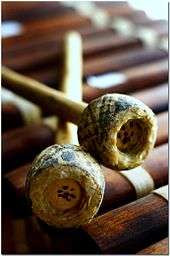Lhamo

Lhamo, or Ache Lhamo, is a classical secular theatre of Tibet with music and dance that has been performed for centuries, whose nearest western equivalent is opera. Performances have a narrative and simple dialogue interspersed with comedy and satire; characters wear colorful masks. The core stories of these theatrical plays are drawn mostly from ancient Indian Buddhist folk tales, lives of important people and historical events from Tibetan civilization. However the ceremonial, dance and ritual spectacles strongly reflects the Tibetan Royal Dynastic period.
Oral accounts credited the foundation of Ache Lhamo tradition to 14th-century mystic Thang Tong Gyalpo. The procedure and style in which Ache Lhamo are performed has changed little since the time of inception in the 14th-15th centuries. Today, the same opening rituals are enacted prior to the commencement of every performance, authentic costumes are worn, singing, dance and musical tradition are strictly adhered to.
Little is known about the development of Lhamo troupes until the time of fifth Dalai Lama, Ngawang Lobsang Gyatso (1617-1682 A.D). There are murals of lhamo stories on the walls of the Potala Palace that are believed to have painted between 1695 and 1705.
According to some oral narratives, the costumes and mask of Hunter or Fisherman (Tibetan: Ngonpa) were designed by the fifth Dalai Lama, based on his personal dream.
By the turn of the 19th century, Ache Lhamo performances were found throughout Tibet, each major district having a permanent amateur troupe performing for the local community at various formal occasions throughout the year.
Some notable troupes including Tashi Sholpa, Chongye Phundun, Shangpa, Gyalkhara, Chungpa and Kyormulung are much sought after and are always a regular part of the official festivals at Norbu Lhingkha, Drepung Monastery and Sera Monastery.
The performers are monks and lay people who love lhamo. Tibetans from all walks of life are familiar with and frequently sing the arias (Tib. namthars) for themselves or for entertainment at social gatherings. The stories were passed down from generation to generation.
In the Tibetan language, the opera is called Al-che-lha-mo, the actor lha-mo-ba and the script khrab-gzhung.
History
It is popularly believed that tradition of performing Ache Lhamo or Tibetan Opera was started by 14th-century mystic Thang Tong Gyalpo, who was born in either 1361 or 1385. After spending years in monastic study, he took monastic vows from Lama Nyima Senge, who named him Tsuendue Sangpo.
Seeking to construct bridges, he needed labor and resources. Thus during construction of bridge at Chowo Ri, from his labor team he picked seven sisters and taught them some dance and songs. Adorning them with beautiful costumes, they travelled around towns and villages performing dances to raise resources. The yogi beat drums and cymbal while the girls danced and sang. Audiences, impressed, hailed the performers as "goddesses" (Tibetan: Lhamo); since then they were known as Goddess Sisters. (Tibetan: Ache Lhamo); the tradition of Ache Lhamo developed from this beginning.
Over a period of years Thang Tong Gyalpo was able to build 58 iron bridges and 60 wooden bridges across towns and villages. He died at an advanced age in Toe Riwoche in 1509.
The remnants of some of his iron chain bridges still stand today in places in Tibet and Bhutan. It became customary for Tibetans to install images and statues of him when occupying a new home. During the opening ritual dance, every lhamo or opera group installs his statue in the middle of the stage and pays homage to him.
Notable performers
See also
- Yungchen Lhamo
- Namling County, home to Xiangba Tibetan Opera
